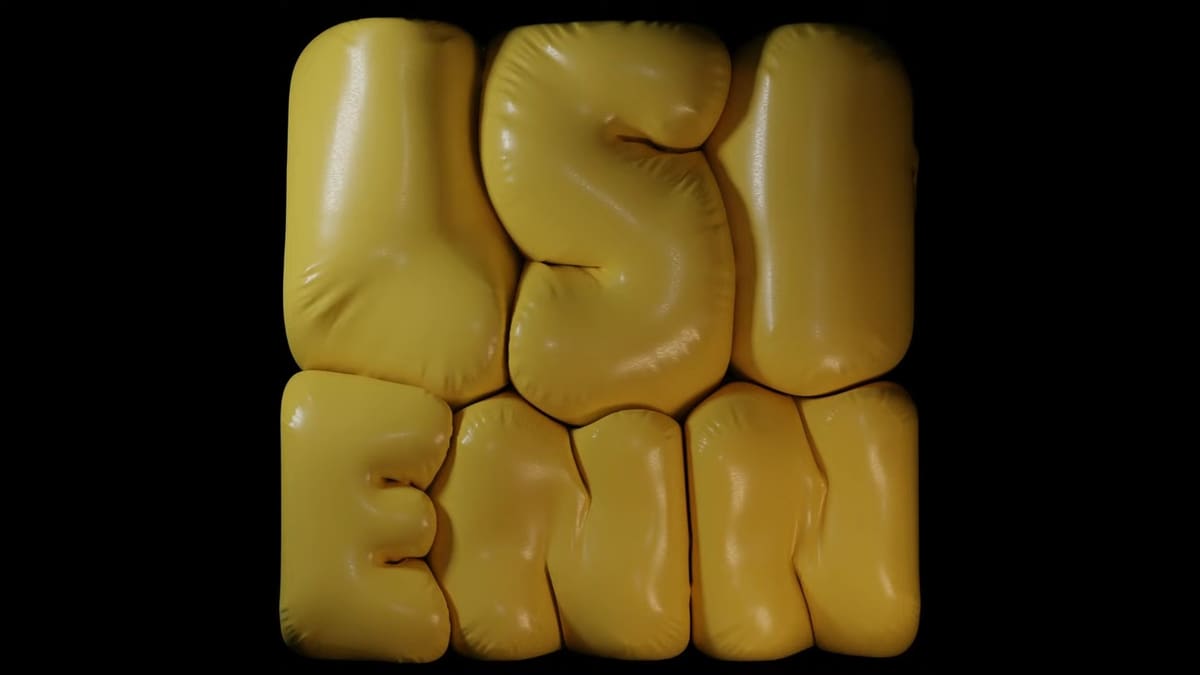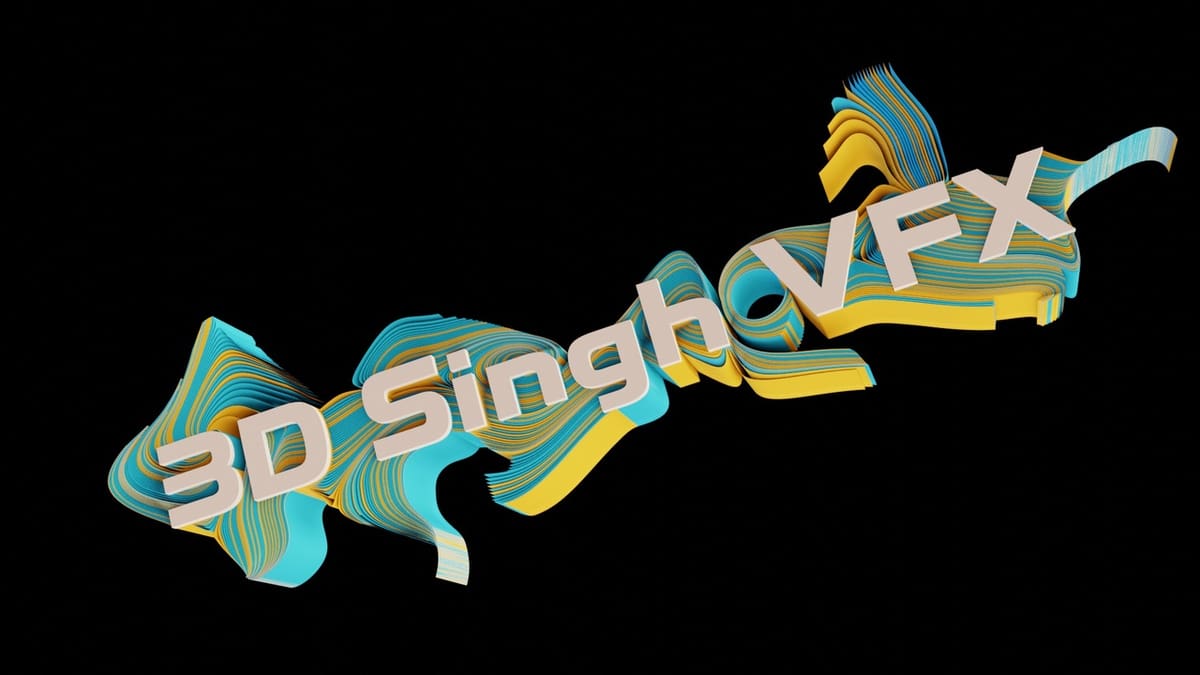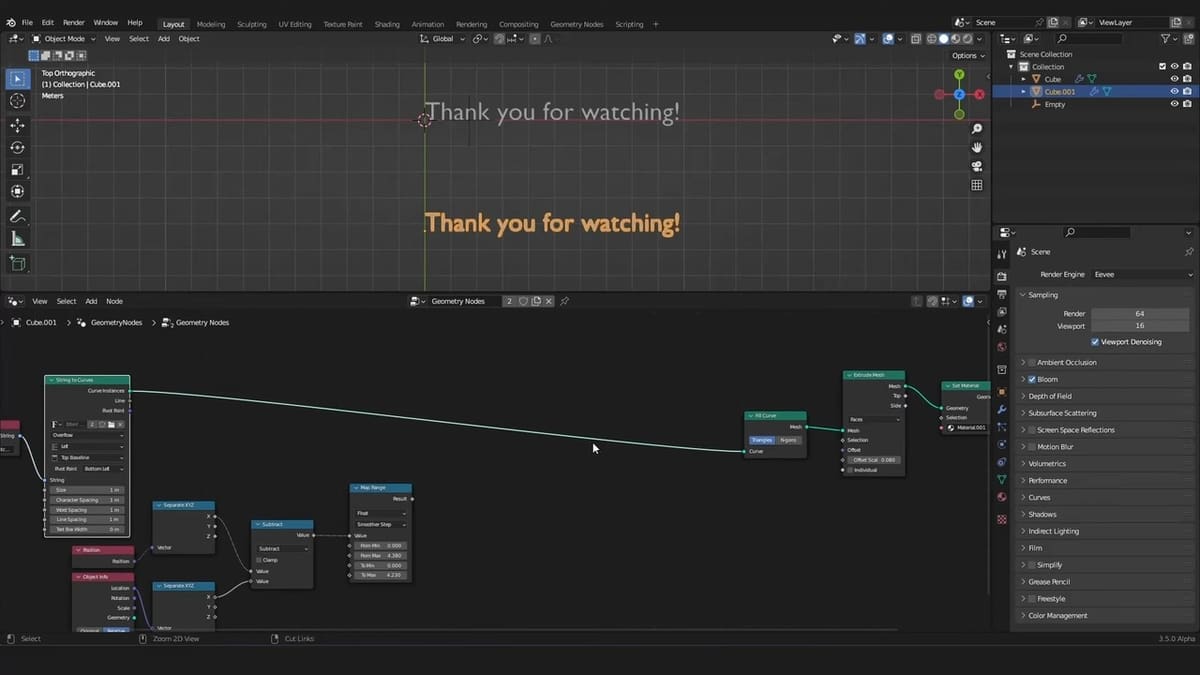Blender is a popular open-source 3D creation program. It’s often used in the film, gaming, and animation industries. Besides 3D models and animations, Blender has advanced text editing capabilities that empower creators to make amazing text effects.
Text effects are essential in creating engaging content. They convey meaning, set a mood, and capture attention. Found in social media graphics, film titles, website headers, and advertisements, text effects are an important element of modern design.
In this article, we’ll show you ten very interesting text effects that you can create in Blender. These were chosen due to their popularity, ease to create, and diverse use of Blender’s features. Let’s check them out!
Text Objects
All of the effects in this category have a common starting point: a text object. They’re pretty easy to create in Blender, and as you’ll see, the sky’s the limit when it comes to what you can do with them.
Inflated

This effect inflates text inside of a cramped space. The entire effect can be produced with a few modifiers and Physics simulation.
The effect is basically a text object within a cube object, with faces deleted on the cube. The text is converted into a mesh, and a Remesh Modifier is applied to it. Its color effects are created using a ColorRamp node with a Noise Texture node.
Short and simple, this effect is easy to recreate. Plus, you’ll level up your nodes game while gaining experience with Blender’s Physics simulation. The tutorial shows you how to do it in less than fifteen minutes.
- Tutorial: YouTube
- Length: 13:17
Circular

This effect is essentially an animation of circular-shaped text. A base text object is extruded and beveled, then a circle object is added to it. The curvature is created using a Curve Modifier and a torus object, which is a 3D geometric shape that’s similar to a donut. For the smooth appearance, subdivisions are added to the torus and shaded smooth.
This effect is beginner-friendly, and you’ll gain experience in using a wide variety of features, including Blender’s geometry tools and modifiers, as well as lighting and rendering. You’ll also learn to adjust with the render settings, create animation with keyframing, and play with post-processing effects using the Compositor.
- Tutorial: YouTube
- Length: 16:36
Curl Gradient

This effect animates text with curls and color gradients. A variety of nodes are used to create it, including Geometry and Simulation Nodes as well as Attribute and ColorRamp Nodes for color. Simulation hacks are shown to help achieve the desired effect.
The tutorial will show you how to set up Simulation Nodes and create three different setups: Derivative, Curl, and Gradient. Definitely give this one a try if you want to create dazzling, trippy text!
- Tutorial: Blender Artists
- Length: 21:52
Chrome

This unique text is made of chrome bubbles! To create the effect, you’ll use Proportional Editing to distort a text object. It’ll be necessary to extrude the object, then apply a Remesh Modifier for a smoother finish. Adding Smooth Corrective and Subdivision Surface Modifiers will refine the text further.
This tutorial will teach you how to create a texture combination of chrome and bubbles for a visually appealing effect. At the same time, you’ll develop skills in working with text objects, manipulating them with proportional editing, and applying modifiers for a polished look.
- Tutorial: YouTube
- Length: 11:00
Glass Dispersion

The effect involves creating a realistic illusion of light bending through glass, which refracts the colors of the text. You’ll have to increase the text object’s depth and resolution. Applying the unique Monsterat Black font will give a textured appearance, and the Glass BSDF shader will make the text look like it’s made of glass. The animation of the effect is tweaked with the Graph Editor.
In learning how to make this effect, you get some practice in modifying text, applying materials and shaders, as well as adding animations and refining them with the Graph Editor. The tutorial will also show you how to render low-resolution images quickly and upscale them to 4K or 8K in seconds.
- Tutorial: YouTube
- Length: 16:27
Glitch

This effect animates text with glowing multicolored glitches. Besides the base text object, the entire effect can be produced with several nodes. Also, make sure you have the Node Wrangler add-on.
The glitch effect is essentially a material applied to the text object. The striations are created with the Wave Texture Node, and the color effects are thanks to the combination of Mix and ColorRamp Nodes. The striations are distorted into glitches based on settings in the Voronoi Texture Node, where you’re also able to add the frame driver for animation. Lastly, the luminosity of the text effect is achieved with the Emission Node.
Dynamic and impactful, the effect is relatively quick and easy to produce. The tutorial that shows you how to do it is one of the shortest on the list. You’ll definitely take your nodes game to the next level while also gaining experience manipulating materials in Blender.
- Tutorial: YouTube
- Length: 4:42
Geometry Nodes

All kinds of effects can be created by working with Blender’s node system. While the effects aren’t as dazzling as the others on this list, this tutorial gives you a deep dive in using nodes for text applications.
This effect animates text using a String to Curves Node. This automatically uses a string that is an input type, and converts letters into curves. A Translates Instances Node changes the position of instances. Combined with a SeparateXYZ and Math Nodes, the text will move along the axis. A ColorRamp Node defines the effect’s color, and luminosity is achieved with the Emission input found on the PrincipledBSDF node.
It’s a versatile effect that has lots of room for customization. You’ll definitely level up your nodes game while also gaining experience with animating text in Blender.
- Tutorial: BlenderNation
- Length: 18:11
Non-Text Objects
To create awesome text effects in Blender, you don’t have to start with text objects. You can use basic shapes as well as more complex objects such as meshes. These can be further edited using various tools and techniques, such as scaling, rotating, and applying textures and materials.
The next few sections will show you alternative approaches that yield stunning results.
Molten Chrome

Design a custom molten chrome typeface with this effect! This striking effect combines the shiny metallic look of chrome with the fluid, flowing properties of molten metal.
To start, an imported sketch is transformed in Blender by using a Remesh Modifier and by adjusting the Voxel Size. You can add a background using the Environment Texture Node connected to the World Output Node. Additionally, the creator demonstrates how to animate the typeface with a simple rotation through the use of keyframing.
Beautiful and concise, this effect is easy to achieve. You’ll improve your node skills and gain experience in modifiers and post-processing effects using compositing.
- Tutorial: Are.na
- Length: 12:11
Handwriting

Thanks to Blender’s Physics simulation, this text effect simulates a piece of string being pulled. A curve is created by using the Draw tool, then converted into a mesh to enable Cloth simulation. A pin group is used to attach to only one point of the string. This allows the rest of the curve to fall down realistically, simulating handwriting.
This effect will definitely build up your simulation skills. The tutorial will also show you a simple rotoscoping method with auto keying.
- Tutorial: YouTube
- Length: 24:18
Neon

How can we talk about text effects without mentioning neon lights?!!!
This effect is another fast and easy one. The process involves using the Logo Tracer add-on as well as adding materials and lighting to the scene. To achieve the lighting, you’ll add an Emission but this time using the Properties Editor.
It’s as fast and easy as it sounds.
- Tutorial: BlenderNation
- Length: 4:43
License: The text of "The 10 Most Interesting Blender Text Effects" by All3DP is licensed under a Creative Commons Attribution 4.0 International License.
